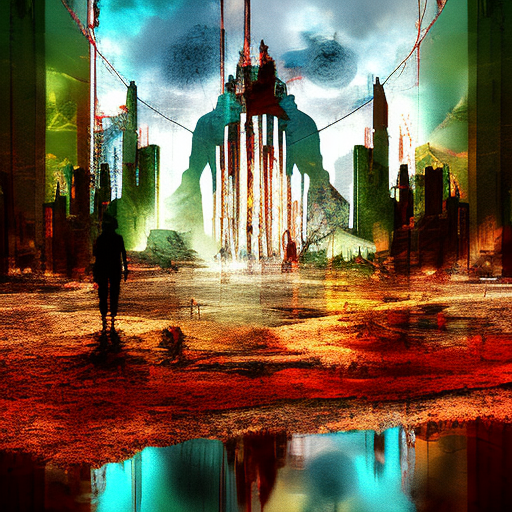One-line Summary:
“The Waste Land” is a complex and influential modernist poem that explores the fragmented and disillusioned state of post-World War I society.
The Fragmented Modern World:
“The Waste Land” by T.S. Eliot is a seminal modernist poem that reflects the fragmented and disillusioned state of post-World War I society. Divided into five sections, the poem presents a collage of voices, images, and allusions that depict a world in crisis. Eliot’s use of multiple narrators and fragmented structure mirrors the disorienting experience of living in a society grappling with the aftermath of war.
The poem opens with the famous line, “April is the cruellest month,” which sets the tone for the bleakness and despair that permeate the work. Eliot presents a world devoid of meaning and purpose, where traditional values and beliefs have been shattered. The fragmented structure of the poem reflects the disintegration of society and the loss of a coherent narrative.
Cultural Decay and Spiritual Barrenness:
Throughout “The Waste Land,” Eliot explores themes of cultural decay and spiritual barrenness. The poem is filled with allusions to various mythologies, religious texts, and literary works, highlighting the breakdown of traditional systems of meaning. Eliot suggests that the modern world is characterized by a lack of spiritual fulfillment and a sense of emptiness.
One of the most striking images in the poem is that of the wasteland itself, a metaphor for the desolate and sterile state of society. The wasteland represents a world devoid of fertility, both in terms of the land itself and the spiritual and emotional lives of its inhabitants. Eliot’s use of vivid and evocative imagery paints a picture of a world in decline, where hope and redemption seem elusive.
The Search for Redemption:
Amidst the despair and decay, “The Waste Land” also explores the possibility of redemption. The poem presents various characters and voices who are searching for meaning and connection in a fragmented world. From the disillusioned Tiresias to the Fisher King, each character represents a different aspect of the human condition and the quest for salvation.
Eliot suggests that redemption can only be achieved through a process of self-reflection and spiritual renewal. The poem encourages readers to confront their own inner wastelands and seek a path towards regeneration. By grappling with the darkness and despair of the modern world, individuals can find a glimmer of hope and transcendence.
Key Takeaways:
- “The Waste Land” is a modernist poem that reflects the fragmented and disillusioned state of post-World War I society.
- The poem explores themes of cultural decay, spiritual barrenness, and the search for redemption.
- Eliot’s use of multiple narrators and fragmented structure mirrors the disorienting experience of living in a society grappling with the aftermath of war.
- The wasteland serves as a metaphor for the desolate and sterile state of society, highlighting the loss of meaning and purpose.
- The poem encourages readers to confront their own inner wastelands and seek a path towards regeneration and transcendence.
“April is the cruellest month.”
– This opening line sets the tone for the bleakness and despair that pervade “The Waste Land.” It encapsulates the fragmented and disillusioned state of post-World War I society, where traditional values and beliefs have been shattered. Eliot’s poem serves as a powerful critique of a world in crisis, while also offering a glimmer of hope for redemption and renewal.












